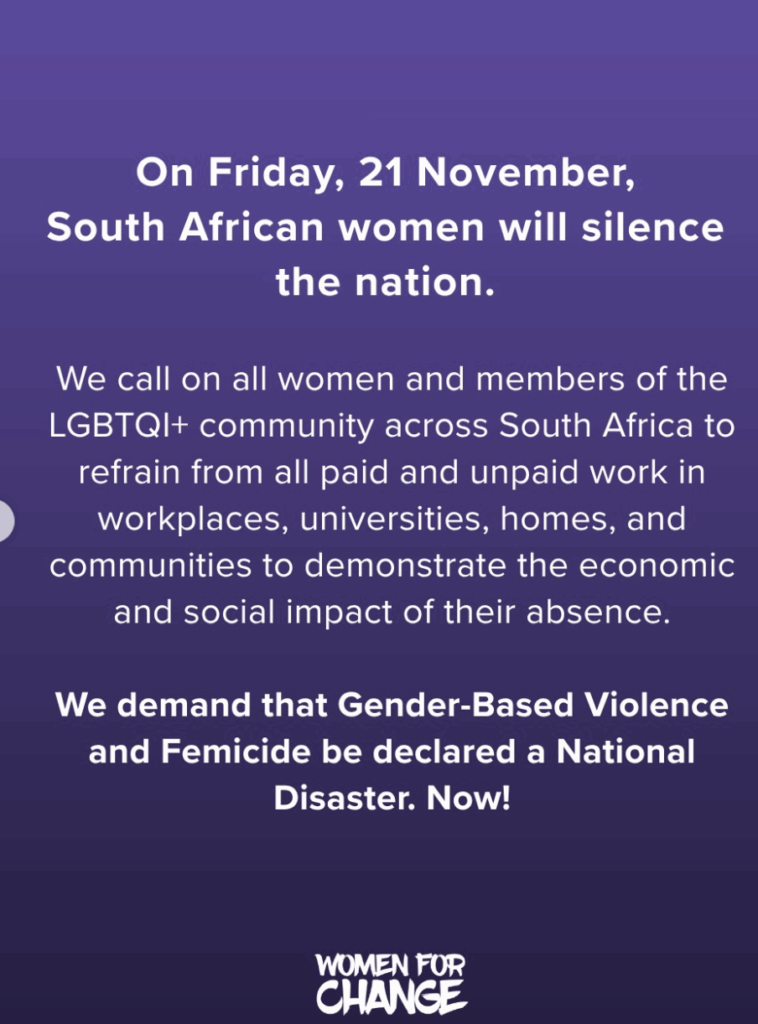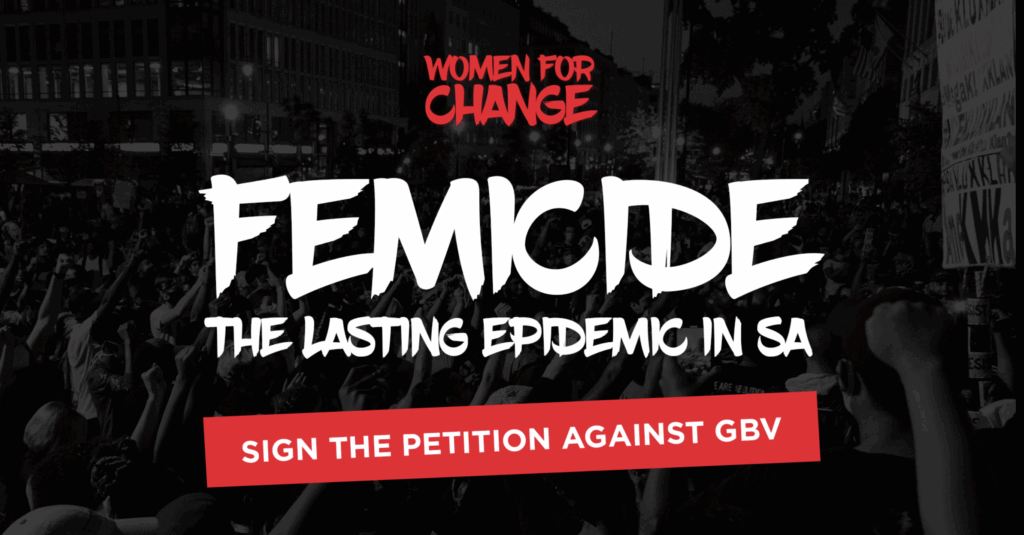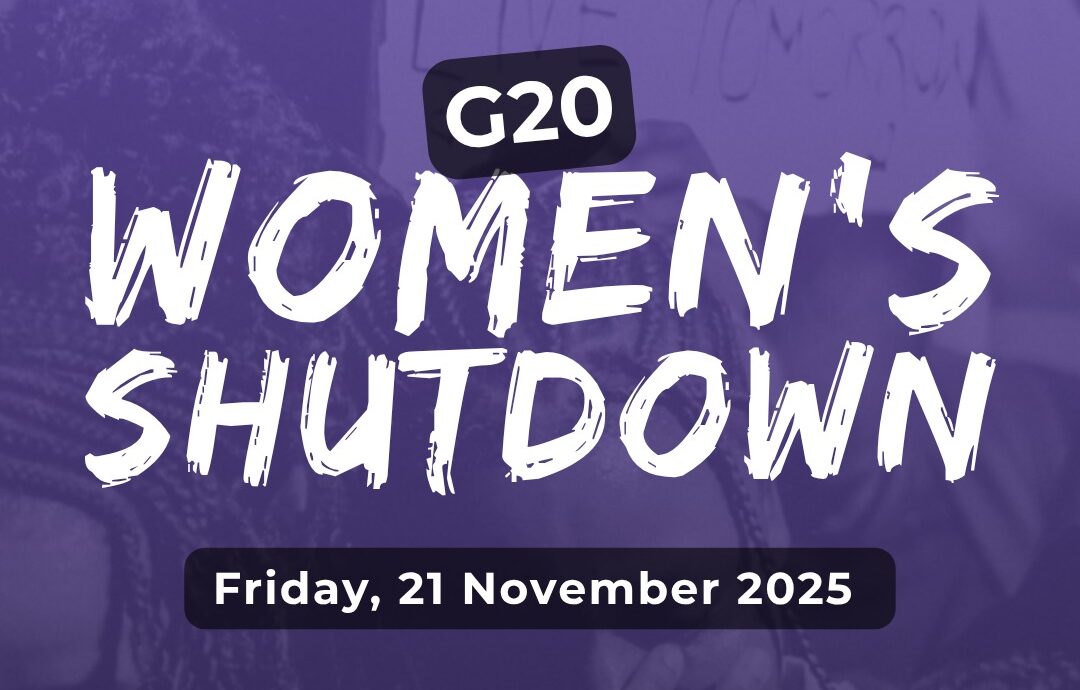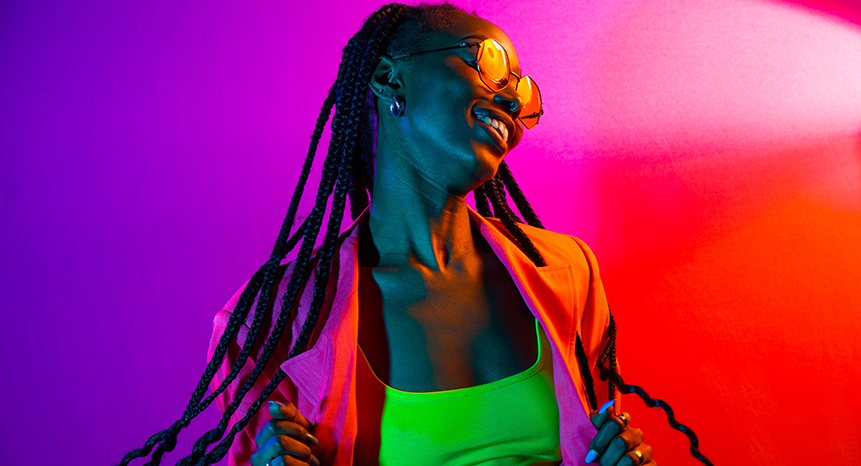Women for Change leads South Africa’s #WomenShutdown, blending online activism with real-world protest to demand action against gender-based violence.
Something powerful is happening online, and it’s spilling into the streets.
Over the last few days, timelines across South Africa have turned purple. Profile pictures, posters, stories, and DMs are all pulsing with one message: #WomenShutdown. Behind it is Women for Change, a grassroots movement proving that activism doesn’t only live on the streets.
A Movement That Refuses to Be Silent
Women for Change is calling for a national shutdown and a 15-minute standstill on 21 November 2025, demanding that gender-based violence be declared a national disaster. Every two and a half hours, a woman is murdered in South Africa. The message is clear: enough is enough.
What stands out about this campaign is how it connects online energy with real-world action. In true 2025 fashion, change is being mobilised not only through marches but also through memes, posts, and profile pictures.
Purple, the campaign’s chosen colour, now symbolises unity, mourning, and defiance. It’s everywhere. From WhatsApp groups to TikTok timelines.


How the Digital Space Became the New Protest Ground
For years, Women for Change has built an online community where survivors share their stories, statistics are exposed, and solidarity is amplified. Now, that same energy is moving offline.
The call to action is simple but powerful. South Africans are being encouraged to change their profile pictures to purple, wear black, and withdraw their labour and spending on the 21st to show how much the country depends on women’s unseen work. At noon, participants will lie down for 15 minutes to honour the women who no longer can.
Supporters are also urged to sign the petition at womenforchange.co.za/petition.

From Hashtags to Headlines
What is striking about this moment is how Women for Change is reclaiming both social media and public space. The movement is turning virality into something tangible. Likes become leverage. Hashtags become headlines.
Several well known South Africans have lent their voices to the shutdown. Bonang Matheba, J’Something, Siv Ngesi, Tyla, DJ Zinhle and Nomzamo Mbatha have all used their platforms to amplify the message of women’s safety and national accountability.
J’Something said, “Women’s safety in our country is something that we can’t keep ignoring. It is not about the purple profile pictures. It is about seeing that and actually figuring it out like I have.”
Siv Ngesi added, “Men need to get their hands dirty and be involved throughout the protest.”
Support has also shown up in the public landscape. The Mall of Africa in Midrand was lit up in purple as a powerful gesture of solidarity with the movement. Other public buildings joined in, creating a visual reminder that the country is watching, listening and feeling the urgency.
The movement is growing from screens into real spaces. Visibility matters, but presence matters even more.
From Screen to Street: Will They Show Up
There is another layer to this story. The movement has taken over the digital world, but the hope is that people show up in the real world with the same energy they have shown online. The shutdown is not meant to be a trend. It is meant to be a revolt.
If South Africans show up physically, the campaign moves from online visibility to meaningful pressure. It becomes the bridge between digital solidarity and public action. That shift is where lasting change is made.
See You on the 21st
So, mark the date: 21 November. South Africa will stand still, online and offline.
Change your profile picture. Wear black. Take to the streets. And if you can’t march, amplify the message wherever you are. Every post counts. Every signature matters. Every voice adds to the roar.
Because until every woman feels safe, we’re not done.
#WomenShutdown #WomenForChange #DeclareGBVaNationalDisaster




